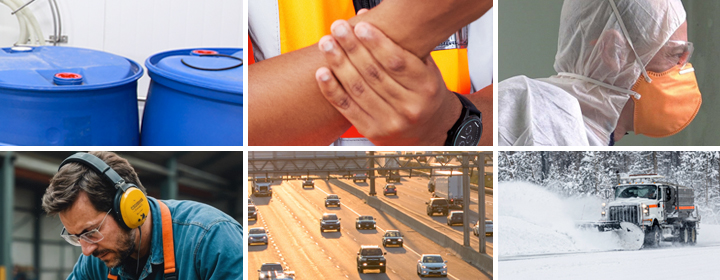The study found that 90% of U.S. workers believe their organization has a duty of care to protect employees from unnecessary risk of harm when working or traveling on their behalf. Furthermore, 82% of employees stated employers’ obligation to keep employees safe extends to those working remotely.
Workplace security concerns and safety practices
The report asked respondents to rank their level of concern when it comes to ten common workplace safety threats. The threats were ranked by how many employees classified themselves as “extremely or somewhat concerned.”
- Public health emergencies (79%)
- Cyberattacks (65%)
- Severe weather (65%)
- Crime (62%)
- Significant outages (59%)
- Transportation disruptions (55%)
- Natural disasters (54%)
- Workplace violence (53%)
- Structure fires (48%)
- Protests and demonstrations (46%)
The report (Workplace safety risks to employees) also asked respondents which workplace safety issues they had encountered at work. Severe weather ranked first (46%), followed by significant outages (40%) and public health emergencies (33%).
While 82% of working Americans report that their employer offers safety training, only 56% report participating in training more than once per year. What’s more, employees who are not offered safety training are more than twice as likely to say they would not know what to do in the event of an emergency at work.
There are many types of hazards – chemical, ergonomic, physical, and psychosocial, to name a few – which can cause harm or adverse effects in the workplace. Get resources on specific hazards and their control, including identification, risk assessment, and inspections, to keep your workplace healthy and safe.

Choose from the following types of hazards:
Access chemical information with substance. Find resources on chemical hazards, product safety, WHMIS, (M)SDSs, transport of hazardous materials, toxicity, and safe work practices.
Chemicals
Every workplace has chemicals – ranging from cleaning products to full-scale chemical production. If chemicals are…
Effects on the body
In order for a chemical to become hazardous to a person’s health, it must first contact or enter the body and the…
WHMIS/GHS/(M)SDS
WHMIS is a comprehensive system for providing information on the safe use of hazardous products in Canadian…
For more information, click here.





